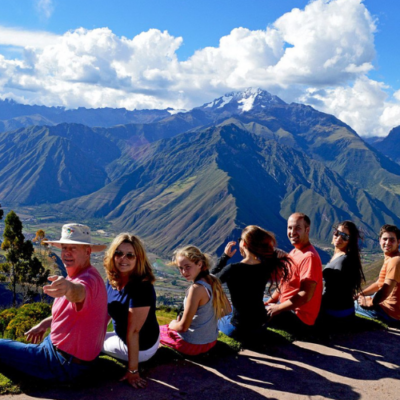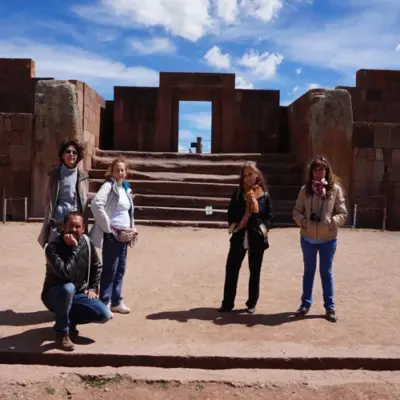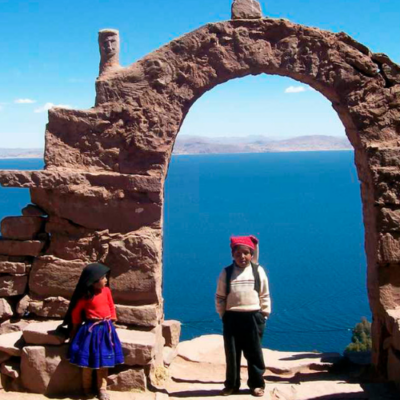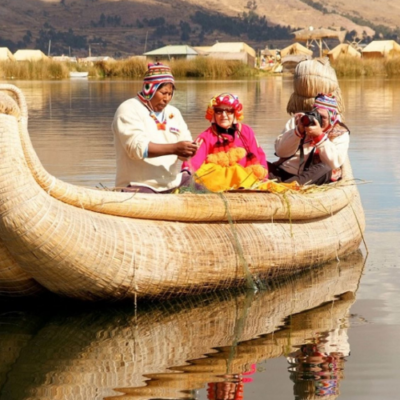PERÚ TRAVEL PACKAGES











23 May, 2024
Cusco, former capital of the Inca Empire and one of the most popular tourist destinations in Peru, not only impresses with its impressive colonial architecture and Incan ruins, but also with its delicious typical food. Cusco gastronomy is an amalgam of authentic flavors, fusing local ingredients with Spanish influences and other Andean cultures. In this article, we will explore some of the most emblematic dishes that you must try during your visit to Cusco.

In the heights of the Peruvian Andes, a dish stands as a culinary emblem, representing tradition, culture and the exquisiteness of local gastronomy: baked guinea pig. This preparation, which may seem exotic to some, is a true delight for adventurous palates who dare to try it. In this article, we will explore the history, ingredients, and preparation process of this iconic Andean dish.
The guinea pig, or guinea pig, is a domestic animal that has been raised in the Andes for thousands of years, even before the arrival of the Spanish to South America. For ancient Andean civilizations, such as the Incas, the guinea pig was not only a source of food, but also a status symbol and an important element in ritual ceremonies.
Baked guinea pig originated in Andean homes, where families prepared this dish to celebrate special occasions or to entertain the most distinguished guests. Over time, it became an iconic dish of the Cusco region and a culinary attraction for visitors looking to explore authentic Peruvian cuisine.
Preparing baked guinea pig is relatively simple, but requires fresh, quality ingredients to obtain the best result. Essential ingredients include:
Cuy: Preferably young and tender, it is cleaned and seasoned with a mixture of aromatic herbs and local spices.
Herbs and Spices: Garlic, coriander, cumin and yellow chili are some of the typical herbs and spices used to season guinea pig, adding depth and flavor to the dish.
Lemon: It is used to marinate the guinea pig, helping to enhance its flavor and tenderize the meat before cooking.
Chicha de Jora: This fermented purple corn-based drink is often used as part of the marinade, adding a sour and sweet touch to the guinea pig.
Vegetables: To accompany baked guinea pig, potatoes, sweet potatoes and corn are usually used, which are cooked together with the guinea pig and absorb the juices and flavors of the meat during cooking.
The process of preparing baked guinea pig is a combination of traditional techniques and ancestral culinary knowledge. Although it may vary slightly by region and family recipe, the basic steps are as follows:
Cleaning and Seasoning of the Cuy: The guinea pig is thoroughly cleaned, rubbed with lemon and seasoned with herbs and spices. This stage is crucial to ensure that the guinea pig is well seasoned and ready for cooking.
Marinated: The guinea pig is immersed in a marinade of chicha de jora, garlic, herbs and spices, where it rests for several hours or overnight. This step allows the meat to absorb the flavors of the marinade and tenderize before cooking.
Cooking in a Wood Oven: The marinated guinea pig is placed in a preheated wood oven, where it is slowly cooked over medium heat for approximately one hour. During cooking, they are sprinkled with lemon juice and turned occasionally to ensure even cooking and crispy skin.
Serve and Taste: Once the guinea pig is golden and crispy on the outside and tender on the inside, it is removed from the oven and served hot, accompanied by potatoes, sweet potatoes and corn. Each bite is an explosion of flavors, with the juicy and aromatic meat contrasting with the crispy texture of the skin.
Baked guinea pig is much more than a typical Andean dish; It is a manifestation of the rich history and cultural diversity of the region. Each bite is a sensory journey that transports diners to the heights of the Peruvian Andes, where tradition and culinary innovation merge to create an unforgettable gastronomic experience. So the next time you visit Cusco, don’t miss the opportunity to try this local delicacy and discover why baked guinea pig is truly the culinary jewel of the Andes. Enjoy!

At the heart of Peruvian gastronomy, especially in the Cusco region, is a dish that awakens the senses with its unique combination of flavors and its characteristic spicy touch: Rocoto Relleno. This delicacy, which fuses local ingredients with traditional culinary techniques, is a true gem of Peruvian cuisine that captivates the most demanding palates. In this article, we will explore the history, ingredients, and preparation process of this iconic dish.
Rocoto is a variety of chile found throughout Peru, but is especially popular in the Andean region, where it is grown and used in a variety of traditional dishes. The stuffed rocoto, however, has its roots in Cusco cuisine, where it has become an emblematic dish and an indispensable element in local celebrations and festivities.
Although it is not known with certainty when and how rocoto stuffed was invented, it is believed that its origin dates back to colonial times, when the Spanish introduced new ingredients and culinary techniques to the Andean region. Since then, rocoto relleno has evolved and adapted to local tastes and preferences, becoming an integral part of the culinary identity of Cusco and its surroundings.
Rocotos: Preferably large and ripe, they are cleaned, deveined and blanched to reduce their spiciness.
Meat: Ground beef is the traditional filling, although other types of meat such as pork, chicken, or even quinoa can also be used for a vegetarian option.
Onion and Garlic: Finely chopped and sautéed to add flavor to the filling.
Ají Amarillo: This Peruvian chili is essential to give color and flavor to the filling, although the amount can be adjusted depending on the desired level of spiciness.
Cheese: It is used to add creaminess and flavor to the filling, traditionally fresh cheese or Andean cheese is used.
Egg: Cooked and chopped, it is mixed with the meat and cheese to add texture to the filling.
Milk and Bread: Used to make a type of breadcrumbs that are added to the filling to help thicken and bind the ingredients.
Preparation of the Rocotos: They are washed, deveined and blanched in boiling water to reduce their spiciness. Then they are cooled and set aside.
Preparation of the Filling: The meat is cooked with onion, garlic, yellow pepper and spices until well cooked and golden. It is then mixed with cheese, egg, milk and breadcrumbs to form a homogeneous mixture.
Stuffing of the Rocotos: Fill the rocotos with the meat mixture and place them in a baking dish.
Covered and Baked: The stuffed rocotos are covered with cheese and baked until golden and bubbly.
Serve and Taste: Once the stuffed rocotos are ready, they are served hot, accompanied by golden potatoes, rice and Creole sauce. Each bite is an explosion of flavors, with the spiciness of the rocoto balanced by the creaminess of the cheese and the richness of the meat.

At the heart of Andean culinary culture is a gastronomic ritual that goes beyond simple food preparation: Pachamanca. This ancient cooking method, dating back to pre-Columbian times, is a celebration of the land, a communion between man and nature that results in a feast of authentic and comforting flavors. In this article, we will explore the history, ingredients, and preparation process of this iconic Andean dish.
Pachamanca has its roots in ancient Andean civilizations, such as the Incas, who worshiped Pachamama or Mother Earth as a sacred deity. For them, Pachamanca was not only a way of cooking food, but also a sacred ritual that honored the fertility of the land and gave thanks for the food it provided.
Over time, Pachamanca became a fundamental part of the culinary culture of the Peruvian Andes, especially in rural areas where ancestral traditions are preserved. Today, Pachamanca remains a celebration of the land and a way to bring the community together around a shared, hearty meal.
Pachamanca is a feast of the land, using a variety of local ingredients to create a dish full of flavor and tradition. Some of the essential ingredients include:
Meats: Traditionally pork, chicken, lamb and beef are used, as well as sausages such as chorizos and blood sausages. These meats are marinated with aromatic herbs and spices before being cooked.
Tubers: Potatoes, sweet potatoes, geese and yuccas are essential in Pachamanca, providing carbohydrates and texture to the dish.
Corn: Corn is another basic ingredient in Pachamanca, either in the form of corn or mote (cooked dried corn).
Herbs and Spices: Aromatic herbs such as huacatay and mint, as well as spices such as cumin and garlic, add flavor and aroma to Pachamanca.
Banana Leaves: Used to wrap ingredients before being buried in hot soil, helping to retain moisture and flavors during cooking.
The Pachamanca preparation process is a community event that involves several people and follows a series of traditional steps:
Ingredient Preparation: The meats are marinated and cut into pieces, the tubers are peeled and sliced, and the corn is cleaned and soaked. All ingredients are seasoned with herbs and spices to taste.
Ground Cooking: A hole is dug in the ground and a layer of hot stones is placed at the bottom. Then, the banana leaves are placed on the bottom and the ingredients are arranged in layers, starting with the meats and followed by the tubers and corn.
Covering and Cooking: The ingredients are covered with more banana leaves and covered with a layer of soil, creating a natural oven. The hot stones generate steam and heat, slowly cooking the ingredients over several hours.
Digging and Serving: Once the ingredients are cooked, they are carefully dug up and served on large platters so that everyone can enjoy this feast of the earth.

In the vibrant tapestry of Peruvian gastronomy, there is a dish that captivates not only for its exquisite flavor, but also for its rich history and its ability to dazzle all the senses: Chiriuchu. This traditional dish, Typical food of Cusco, is a truly multi-sensory culinary experience that combines a variety of ingredients to create a feast for the palate and the senses. In this article, we will immerse ourselves in the world of Chiriuchu, exploring its origins, ingredients and the sensory pleasure it offers to those who venture to try it.
Chiriuchu has its roots in the city of Cusco, former capital of the Inca Empire and nerve center of Andean culture in Peru. Its name comes from the Quechua language, where “chiri” means cold and “uchu” means mixture, reflecting its origin as a dish consumed during the Corpus Christi festival, which coincides with the beginning of winter in the southern hemisphere.
During this religious festival, Cusco residents prepare Chiriuchu as an offering to the saints, but also as a celebration of the cultural and culinary diversity of the region. Chiriuchu is a reflection of the fusion between Andean cuisine and Spanish influence, with ingredients ranging from meats and sausages to potatoes, eggs and chili peppers, all presented in a colorful and festive composition.
Chiriuchu is a unique combination of ingredients that results in a dish full of textures, flavors and colors. Some of the essential ingredients include:
Meats and Sausages: Among the meats used are cecina (dried meat), chalona (dried sheep meat), chorizo and sausage, among others. These meats are cut into small pieces and presented on top of the plate.
Potatoes: Potatoes, a staple of the Andean diet, are cooked and sliced or presented whole, adding texture and flavor to the dish.
Eggs: Hard-boiled eggs are cut in half and placed strategically on the plate, providing color and nutrition.
Chili Peppers and Sauces: Yellow chili pepper and other varieties of chili pepper are used to prepare spicy sauces that accompany Chiriuchu, adding a touch of heat and flavor.
Cheese: Queso fresco or Andean cheese is cut into pieces and served as a creamy complement to meats and potatoes.
Toasted Corn: Toasted corn, known as corn, is used as a garnish and provides a crunchy contrast to the main ingredients.
The preparation of Chiriuchu is relatively simple, as it involves artistically arranging the ingredients on a large, festive plate. Presentation is as important as flavor in Chiriuchu, with ingredients arranged in an orderly and colorful manner to create a visually stunning composition.
Once all the ingredients have been arranged, the Chiriuchu is served accompanied by hot sauces, lemon slices and fresh chili peppers, allowing each diner to personalize their experience according to their flavor preferences and level of spiciness.
When tasting Chiriuchu, all the senses are awakened. The variety of ingredients offers an explosion of flavors, from salty and smoky meat to soft and creamy potatoes, through the spiciness of chili and the freshness of lemon. Texture also plays an important role, with the combination of tender meats, firm potatoes and creamy eggs providing a complete and satisfying sensory experience.
Additionally, the visual presentation of Chiriuchu is impressive, with a range of vibrant colors that bring the dish to life and stimulate the appetite even before tasting it. Each bite is a culinary adventure that transports diners to the mountains of Cusco, where tradition and creativity come together to create a unique and memorable gastronomic experience.

On the coast of Peru, where the Pacific Ocean caresses the golden beaches, and in the heights of the mountains, where the mountains rise majestically, there is a dish that unites these two seemingly disparate worlds in a symphony of flavors and aromas: Chupe of Shrimp. This dish, which fuses marine ingredients with Andean influences, is a culinary delight that has conquered the palates of locals and visitors alike. In this article, we will explore the history, ingredients and gastronomic pleasure that Chupe de Camarones offers, from the waters of the sea to the peaks of the Andes.
Chupe de Camarones has its roots in the rich Peruvian culinary tradition, which combines native ingredients with European and African cooking techniques. Although its exact origin is uncertain, Chupe de Camarones is believed to have originated on the northern coast of Peru, where shrimp are abundant and have been consumed for centuries.
Over time, Chupe de Camarones spread throughout the country, adapting to the ingredients available in each region and gaining popularity in mountainous areas such as Cusco and Arequipa, where it became an emblematic dish that reflects geographical and cultural diversity. From Peru.
Chupe de Camarones is a mix of simple but tasty ingredients that come together to create a comforting and satisfying dish. Some of the essential ingredients include:
Shrimp: Fresh and quality, shrimp are the star ingredient of Chupe, providing its unique flavor and soft, juicy texture.
Seafood Broth: Seafood broth is made with a combination of heads and shells of shrimp, fish and other shellfish, as well as onion, garlic, carrot and celery, which are simmered to extract all their flavor and aroma.
Potatoes: Potatoes are a key component of Chupe de Camarones, adding substance and texture to the dish. They can be cut into cubes or slices, depending on the cook’s preference.
Eggs: Eggs are added to the broth to thicken it and give creaminess to the Chupe. Traditionally, they are added at the end of cooking and stirred quickly so that they cook lightly and mix with the broth.
Evaporated Milk: Evaporated milk is used to give a creamier texture and mild flavor to the broth, without overpowering the natural flavor of the shrimp.
Ají Amarillo: This Peruvian chili is essential to give Chupe its characteristic yellow color and a touch of mild spiciness that enhances the flavors of the dish.
The preparation of Chupe de Camarones is relatively simple, but requires attention to detail to achieve a perfect result. Basic steps include:
Preparation of the Ingredients: The shrimp are peeled and deveined, the potatoes are cut and the seafood broth is prepared with the ingredients mentioned above.
Cooking the Broth: Cook the seafood broth over low heat for approximately 30 minutes so that the flavors mix and intensify.
Added Potatoes and Shrimp: Add the potatoes to the broth and cook until tender. The shrimp are then added and cooked briefly until pink and cooked through.
Adding Eggs and Evaporated Milk: Add the beaten eggs and evaporated milk to the broth, stirring constantly so that they mix well and cook slightly.
Serve and Taste: Chupe de Camarones is served hot, garnished with chopped parsley and accompanied by fresh bread or white rice. Each spoonful is a gastronomic experience that combines the freshness of the sea with the comforting warmth of a homemade dish.

The typical food of Cusco is a window to the rich history and cultural diversity of the region. Each dish tells a story, from Inca heritage to Spanish influence and contemporary creativity. Whether you’re exploring the city’s cobblestone streets or venturing into the nearby Andean villages, be sure to try these iconic dishes for an unforgettable dining experience in the heart of the Peruvian Andes. Enjoy!
Cusco food is a fusion of Andean, Spanish and African influences, making it a unique and diverse culinary experience. Don’t limit yourself to trying just one dish; explore the variety of flavors and textures the region has to offer, from spicy rocoto relleno to comforting shrimp chupe. Each dish tells a story and is worth discovering!
When you are in Cusco, look for restaurants and food stalls that offer authentic Cusco cuisine, prepared with local ingredients and following traditional recipes. Ask locals or search online for recommendations to find the best places to enjoy a truly authentic dining experience..
Cusco food makes creative use of local ingredients, such as native potatoes, purple corn, yellow chili peppers, and alpaca meat. Take the opportunity to try these unique ingredients and discover how they combine to create delicious and surprising dishes. You won’t regret exploring the authentic flavors of the region!
CONTACT US:
We are a Travel Agency specialized in tourist packages, if you need any information, do not hesitate to write to us.
We offer tours in Peru and Bolivia.










Copyright© 2023 Leading Peru Travel